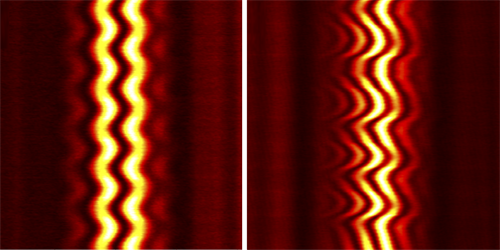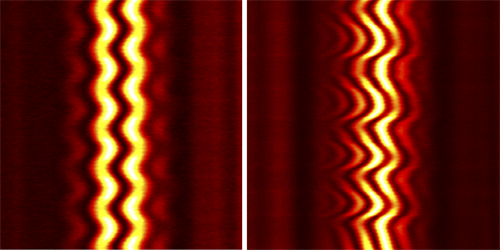Coupled Solitons Jiggle Like Molecules
A soliton is a pulsed waveform that maintains its shape as it travels. If multiple solitons travel in a medium, their mutual attraction can cause them to form bound states that can be seen as “molecules.” Experiments, however, haven’t yet established what molecular properties could be extended to solitons. A team led by Philippe Grelu of the University of Burgundy, France, has now shown that soliton molecules can vibrate like real molecules.
Previous studies using time-averaging methods delivered indirect signatures of soliton molecule vibrations but could not follow the motion of individual solitons. Using a method developed by others, the authors observed soliton light pulses produced by a fiber laser on a shot-to-shot basis, removing the need for averaging. The scheme sends solitons into a fiber that adds a frequency-dependent delay, converting the spectrum of each pulse into a temporal waveform measurable with a fast detector. The results showed that the soliton molecules exhibited two types of internal motion. The first was a vibration reminiscent of a diatomic molecule: the separation in time between the two solitons oscillated (as did their phases). The second was an oscillation of the phases with no change in pulse separation.
The results validate the description of interacting solitons as molecules and may also be important for future uses of soliton molecules in high-speed optical fiber communication. Two or more coupled solitons could boost transmission capacity by encoding more than one bit of information at a time, whereas isolated solitons can only encode single bits.
This research is published in Physical Review Letters.
–Matteo Rini
Matteo Rini is the Deputy Editor of Physics.





